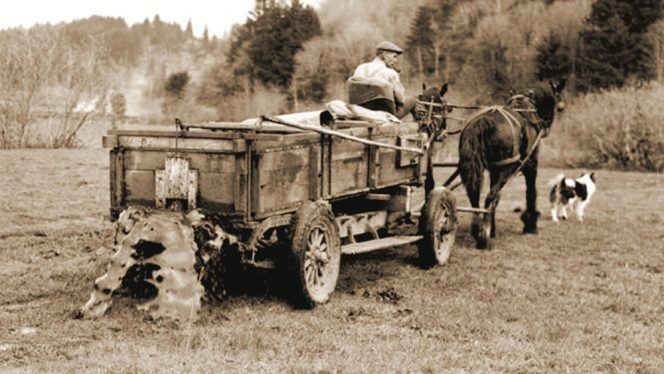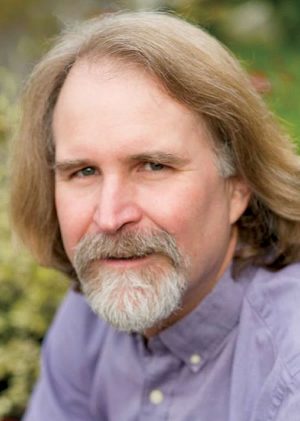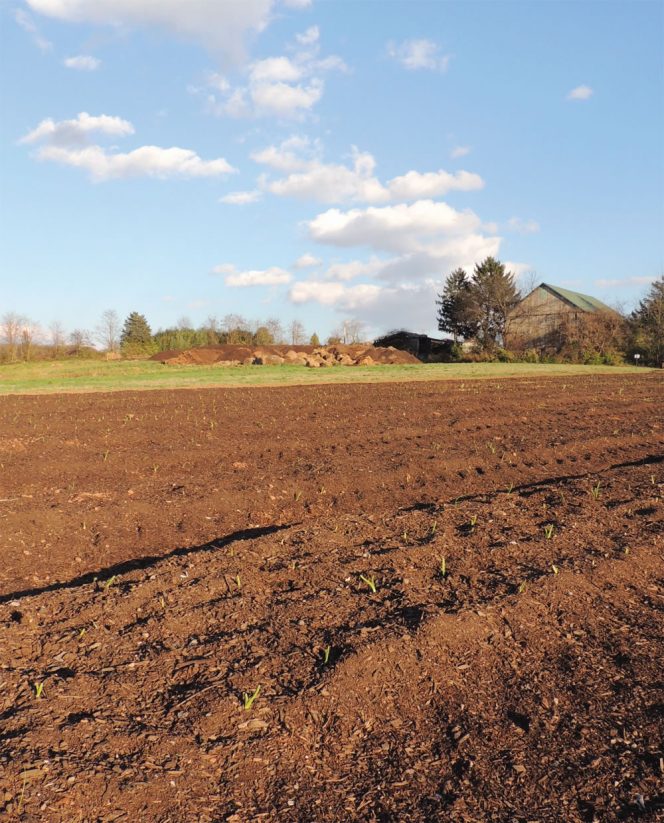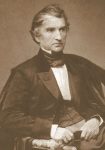Growing A Revolution, published in Spring 2017, examines how restoring fertility to soils can be done rapidly and effectively through recycling organic matter and regenerative farming practices.
David R. Montgomery
BioCycle September 2017
The book looks at how restoring fertility to soils can be done rapidly and effectively through recycling organic matter and regenerative farming practices. On farms this means ditching the plow, planting cover crops, diversifying rotations, and adopting new grazing practices and composting. In urban settings it means large-scale composting and rethinking conventional sewage treatment.
The excerpt reprinted below is the opening to the chapter that looks at the role recycling organic matter can play in soil restoration. It lays out how Liebig came to see that sustaining soil fertility required returning organic matter to the fields from which it was grown. By the end of his life he had come to see that chemical fertilizers could not sustain farming over the long run because they did not replenish the micronutrients essential for plant (and human) health. Liebig concluded that recycling organic matter offered a sound way to close the loop and keep nutrition flowing through cities and fields for generations to come.
— David R. Montgomery, Aug. 2017
German chemist Justus von Liebig is heralded for his pioneering work on the efficacy of chemical fertilizers, like the effects of the big three known as NPK — nitrogen, phosphorous, and potassium — on plant growth. His seminal 1840 book, Organic Chemistry in Its Application to Agriculture and Physiology, discredited the then-popular humus theory of plant nutrition — the idea that plants directly ate decaying soil organic matter. This opened the door for substituting chemical fertilizers for traditional organic fertilizers like manure.
So when I read his 1863 book, The Natural Laws of Husbandry, I was surprised to find him bluntly contradicting the idea that soil fertility could be maintained by adding a few key substances to the soil. In this, his last major work, Liebig recommended returning organic matter to the fields to provide crops with a full complement of nutrients. It turns out that the patron saint of chemical fertilizers thought that soil organic matter was the key to sustaining civilization.
What had changed? Liebig came to realize that soil organic matter played a significant role in nourishing plants after all. While the carbon in decaying organic matter did not feed plants, organic matter had other elements plants needed. And adding an element or two through chemical fertilizers did not address the loss of these other essential nutrients. Liebig argued that farming practices that removed and didn’t replace the full suite of mineral nutrients only worked for so long before they exhausted the soil.
Would Liebig really disapprove of our modern dependence on chemical fertilizers? Perhaps. Much to my surprise, he argued that it was difficult for chemical analyses to evaluate soil fertility because only a small fraction of the elements in soils were in a physical state readily accessible to plants. Fertility depended less on what chemicals made up the soil than on whether they were plant-available.
Liebig did not know about the role of soil life in mobilizing mineral elements and making them available to plants. But he recognized that mineral weathering proceeded slowly, and that elements tied up in rocks and soil minerals were not immediately available to plants. Manure and decaying plant matter, he recognized, provided accessible reservoirs of elements that could help maintain soil fertility. Continuously exporting crops from a field, without returning organic matter, led to the eventual degradation of the soil, he argued. And this had happened time and again throughout history. He pointed to the differences in agricultural practices between Western societies that exhausted their soil and those that farmed the same fields for millennia in the East. If agriculture were to last in the West it had to change.
He pointed to Chinese and Japanese agriculture that supported large populations for centuries. What was the secret to their success? These cultures routinely returned human and animal waste to the land. Liebig argued that the ability of farmyard manure to restore the fertility was established by “the experience of a thousand years” (Liebig, 1863). He advocated for a large-scale return of organic matter to farms because “a soil deficient in organic matter must necessarily be less productive than a soil abounding in it” (Liebig, 1863).

Oregon farmer spreading liquid manure on field via horse-drawn wagon, circa 1938. Image courtesy Extension Bulletin Illustrations Photograph Collection (P 020), Special Collections and Archives Research Center, Oregon State University Libraries
Liebig was the last person I would have suspected to advocate regenerative practices. Yet what he recommended gets close to conservation agriculture — cover crops, crop rotations, and building up soil organic matter. He also encouraged farmers to conduct small-scale experiments to find out what worked best on their soil. Well aware of the variability of soils, he cautioned against applying the same techniques on all farms. He also warned against placing too much faith in simple chemical analyses of the soil, as farmers still do today.
Liebig compared continual withdrawal of minerals from a soil to withdrawing money from a bank for daily expenses without ever bothering to deposit more into the account. In his view, returning nutrients back to the land was best done through the excrement of animals (manure) and man (sewage).
As an example of the latter case, he described the Bavarian experience with poudrette, a fertilizer made from night soil. He related how troops garrisoned at the Radstadt fortress used privies constructed so that excrement fell into open casks fixed upon carts. This provided a convenient way to get rid of the waste. But Liebig noted that this solution had another advantage—it could sustain the fertility of the fields that fed the soldiers. Although dubious about accepting the stuff at first, peasants in the surrounding countryside lined up to buy dried night soil once they realized its fertilizing power.
In 1865, Parliament invited Liebig to visit England to advise on returning town sewage to farmers’ fields. London’s Great Stink, in the hot summer of 1858, had spurred the government to action as repulsed citizens blamed cholera outbreaks on the stench of untreated human waste discharged directly into the fetid River Thames. Liebig hoped that London would become an example for how to make use of all the plant food flowing every day from European cities as sewage. His idea had precedents extending back to Classical Greece, but that fact didn’t make it any more popular. Instead, the appeal of indoor plumbing set society on a different course, in which cities began building sewer systems that ran to distant outfalls.
Liebig’s goal of returning organic matter to the land fell prey to the success of the agrochemical philosophy his disciples had adopted. They focused on fertilizers as central to his Law of Compensation, as Liebig dubbed the need to replace the nutrients taken from a field in crops. Yet Liebig knew there could be no permanent agriculture so long as the full spectrum of nutrients were not returned. Decades later, Sir Albert Howard based his composting practices and his famous Law of Return on a similar argument about the need to return organic matter to the soil. Howard, however, offered his views as a direct refutation of relying on the fertilizers that Liebig’s acolytes embraced. How interesting, I thought, that the fathers of fertilizers and organic agriculture both saw returning organic matter to the land as essential to maintaining fertility over the long run.
Excerpted from Growing a Revolution © 2017 by David R. Montgomery. Used with permission of the publisher, W.W. Norton & Company, Inc. All rights reserved.
David R. Montgomery is a Professor of Geomorphology at the University of Washington, a MacArthur Fellow, and author of award-winning popular science books, including his most recent, Growing A Revolution. He is an internationally recognized geologist who studies landscape evolution and the effects of geological processes on ecological systems and human societies.













